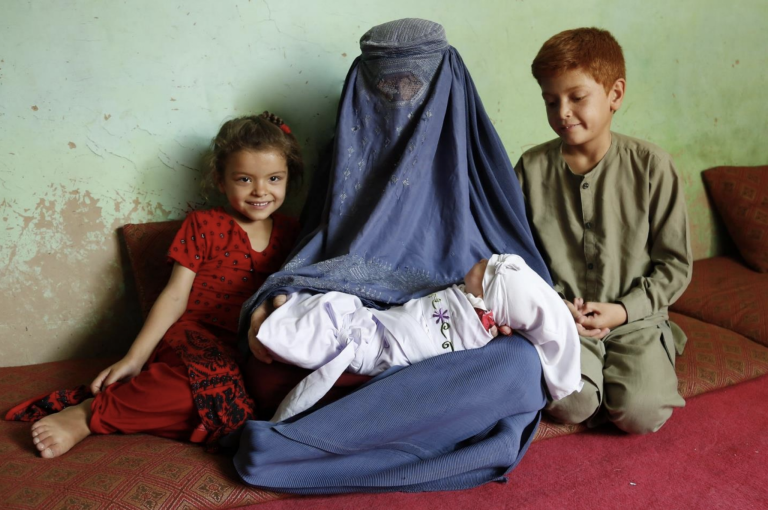By Farid Atiqzai and Sheena Currie
Zir Chinar Kham, Afghanistan—In Ghutai’s third home delivery, her newborn struggled to breathe and died before help could be found. When the Afghan mother of two went into labor with her next child, she was determined that the outcome would be different. With the help of a neighbor, she made it 10 kilometers to her local health facility.
Just like before, Ghutai’s newborn had breathing problems. But thankfully, Dehdadi District Hospital’s midwife Enjila Yaqoobi knew what to do. A recent training on newborn resuscitation had given Yaqoobi the confidence and skills to resuscitate Ghutai’s baby. Today, baby Muzda is healthy and growing strong.
Midwife Yaqoobi attributes her lifesaving actions to the Helping Mothers and Children Thrive project—known as HEMAYAT— a training and mentorship program funded by the United States Agency for International Development (USAID) and led by Jhpiego, in collaboration with Afghanistan’s Ministry of Public Health.
Research Provides Evidence for Improvement
In a new analysis published in BMJ Journal, authors from Afghanistan’s Ministry of Health, USAID, Jhpiego, Johns Hopkins University, UNICEF and elsewhere found “room for improvement of the quality of neonatal resuscitation practices at public health facilities,” which requires strengthening current best practices—like the training Yaqoobi received.
The national quality of maternal and newborn health care study conducted in 2016 examined 226 public health facilities, including 77 with at least five births each day. The authors of the new analysis found that of the 636 births observed , 63 newborns needed bag-and-mask resuscitation. Only 62% of those resuscitations were done using the correctly sized mask. They concluded that the right equipment, paired with the right skills, could critically improve health provider performance at these facilities.
Hands-on Repeated Practice Primes Confident Performance
Together with her fellow midwives, Yaqoobi participated in a Helping Babies Breathe training that built her skills in newborn resuscitation, giving her confidence through hands-on practice with resuscitation equipment and anatomical newborn models.
“Before participating in the Helping Babies Breathe practical learning session, I used to apply methods such as mouth-to-mouth breathing or slapping the child on the back,” Yaqoobi says, referring to inappropriate methods found during the study’s observations.
“In previous years, most cases of prenatal and postpartum complications were referred to the regional hospital of Mazar-i-Sharif,” says Dr. Khaled Azrakhsh, director of the Dehdadi Hospital and Hassina Ainee. “Since the start of the HEMAYAT mentorship program, our staff capacity is developed and now we treat patients [with complications] at our hospital.”
The team at Yaqoobi’s health facility underwent a few key steps to be better prepared to help babies breathe at birth:
1. Received capacity-building and hands-on practice through short, targeted, in-service simulation-based learning activities, spaced over time and reinforced with structured, ongoing practice sessions on the job
2. Reorganized equipment so the newborn station was close to the midwife during delivery
3. Outfitted the newborn station with up-to-date, multisized equipment, which is checked daily
4. Initiated routine mentorship and data collection, as well as regular analysis of data and records as part of continuous quality improvement
Steps like these, the study found, are critical to improving the quality of newborn care in Afghanistan.
Take Action
Midwives, nurses and other health workers in facilities across Afghanistan need the skills, equipment and confidence to save lives. In the midst of conflict, vast distances between communities and remote facilities, and a culture in which many women distrust facility-based care, providers must be able to overcome complications and ensure the health and safety of mothers and their newborns. Low-cost, high-impact interventions to promote maximal retention of knowledge, skills and attitudes can support capacity-building efforts across the humanitarian-development nexus.
Midwives and nurses are a vital component of our goal to reach universal health coverage. Empowering, equipping and supporting their efforts are key steps toward a brighter future for women and families across Afghanistan.
